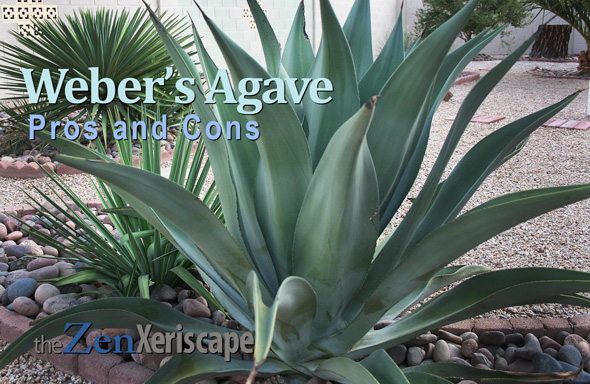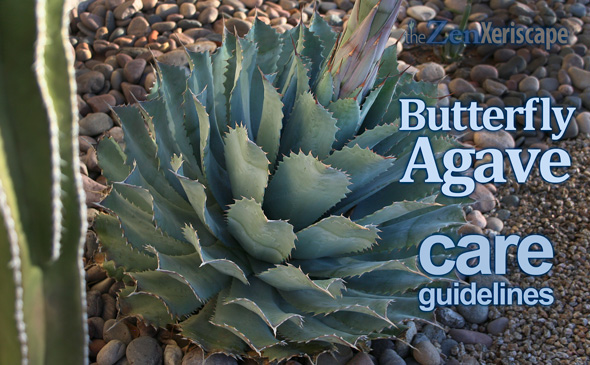One of my favorite agaves is the variegated century plant (Agave americana ‘Marginata’), sometimes sold as the striped century plant. In my opinion, its variegated colors and striking shape make it a standout focal point in any landscape. Unfortunately, I have found it to be difficult to keep alive! Here’s what my experience has taught me about the variegated century plant pros and cons.
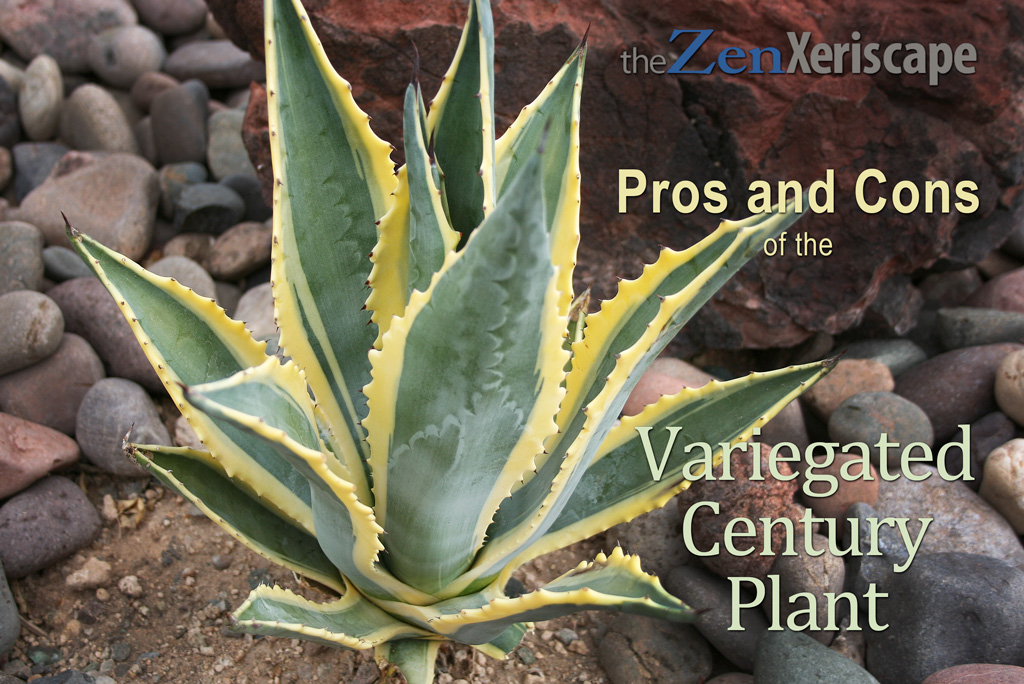
That’s why this agave is one of my favorites.
Before you buy it for your xeriscape,
read about the variegated century plant pros and cons.
Photo by Doug Martin
Variegated century plant pros and cons
PROS
Beautiful colors and interesting shape
This agave’s dynamic variegation of yellows, greens, whites and grays, along with its chiseled leaf shape, make this a standout succulent in any landscape.
Dramatically large size when mature
While I have had extremely large century agaves in my landscapes, my variegated century plants have stayed relatively small. However, once mature, this variegated cultivar does have the potential to get very large. With its variegated colors, this mature plant would be awesome-looking!
Drought-tolerant
The variegated century plant is drought-tolerant, and in my experience, should not receive very much supplemental water. In fact, I committed the grievous error of giving my beautiful variegated century agaves too much love and too much water. And that love and water is what killed them all during the record-breaking heat of 2024.
I believe if I had not given them as much supplemental irrigation, they would still be alive today. Since then, I have made it a practice to only give my agaves a little supplemental water, maybe a month apart. And then, I never let the base of the plant get wet. Never!
Heat- and cold-tolerant
Once established, this agave can take the extreme heat and some below-freezing temperatures. If you live in the USDA hardiness zones of 8-to-11, you should generally have good luck, weather-wise, with this plant.
One thing I did notice about this variegated cultivar, though, is that the ones I planted in afternoon shade did better than the ones that received the full blazing sun of southern Arizona all day.
If you live in a region with a more moderate summer climate, the variegated century plant should also do well in full-sun.
Low maintenance
As I already noted, the variegated century plant should not receive much supplemental water, if any at all. And, it grows slowly, so it will not require much pruning. Once-a-year, I do prune the older, dried-out leaves from around the base of all my agaves.
Easy to propagate
This is one of the easiest agaves to propagate! Like many agaves, this cultivar has lots of pups, mostly around the base of the plant. I replanted many of those pups throughout my landscape. Afterwards, they had grown so fast that after only a year, they, too, were making their own pups.
Thrives in containers
Yes, it will thrive in containers. And, if the sun gets too intense, you can quickly move them into the shade. Or, if temperatures slide into the single digits, bring them into your house to enjoy.
Rabbit resistant
The rabbits rarely chewed on my variegated century plants. I suspect they found the sharp spines on the sides of the leaves a deterrent. They even left the pups alone, although I did see signs that they had tried to munch little fragments.
Fire retardant
If you live a fire-prone area, this agave would work well when planted closer to your house. Unlike grasses or trees which can dry out and easily catch fire, the plump agave leaves should be resistant to fire.
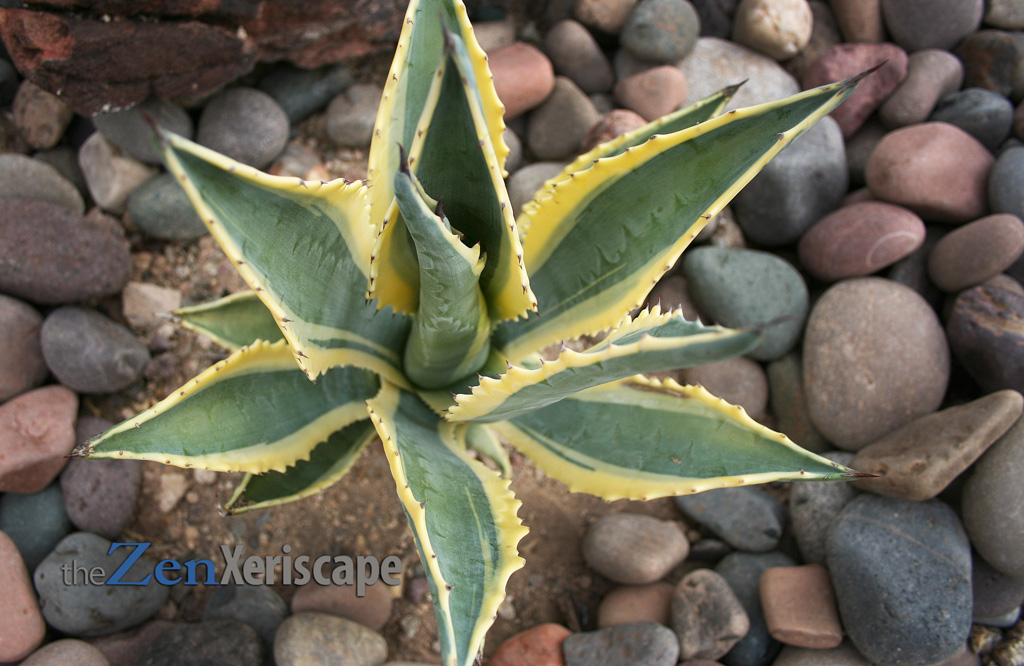
In fire prone areas, plant close to house,
and keep grasses, bushes, or trees farther from house.
Photo by Doug Martin
Buy garden tools on sale! (As an Amazon Associate, I earn a commission from qualifying purchases.)
Variegated century plant pros and cons
CONS
Vulnerable to rot
Unfortunately, the variegated century plant is very susceptible to root rot, which can then quickly infect the entire plant.
By the time we notice any rot, it will likely be too late to save the plant.
So, the lesson I’ve learned from losing this beautiful agave to root rot is to not provide too much supplemental water. Never allow moisture to pool around its base. And, plant in well-draining soil (which I did).
Sharp spines on leaf edges and ends
Don’t plant this agave close to walkways, or in areas where children or pets might play. They have very sharp terminal spines on the edges of their leaves.
When pruning dried leaves, always wear gloves and eye protection.
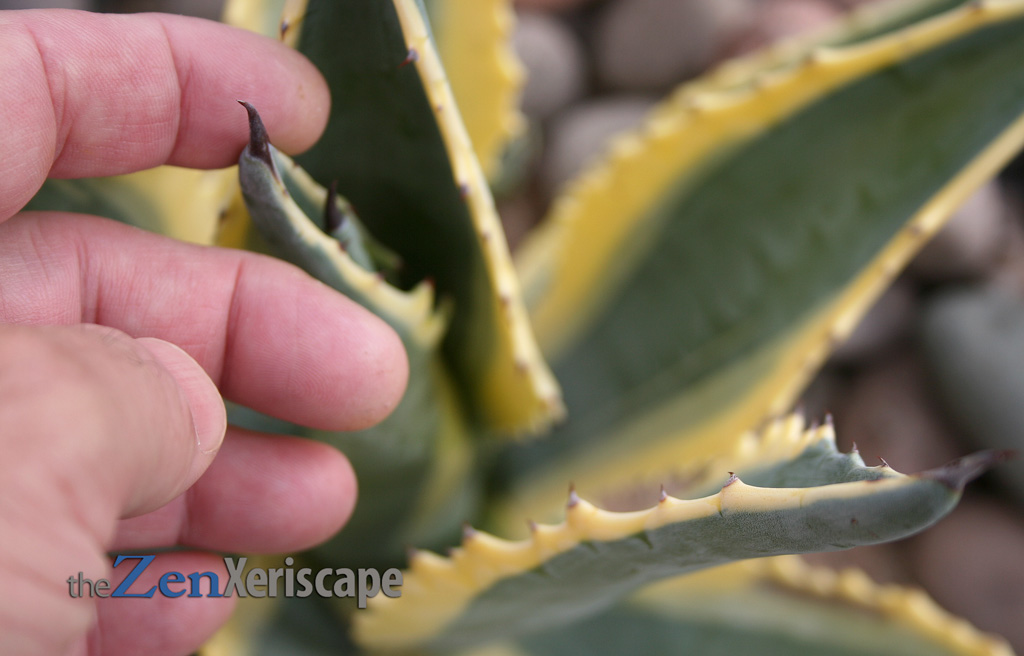
of this agave’s leaves. Be careful on placement
in landscape and when pruning!
Photo by Doug Martin
Dies after flowers bloom on stalk
Just like all agaves, this variegated century cultivar sends out an impressively large flower stalk near the end of its life. Afterwards, the stalk dries out, followed by the agave plant.
Fortunately, the pups all around the base of the plant will survive and continue growing. You can replant those pups immediately for easy propagation.
Grows slowly
This agave grows slowly, so it will take a long time (decades) before it reaches its potentially huge size. And actually, that might be a benefit, especially if you are using them in containers or small areas in your landscape.
Just be aware, though, that the day will come when these magnificent agaves could outgrow their allotted space, in a big way!
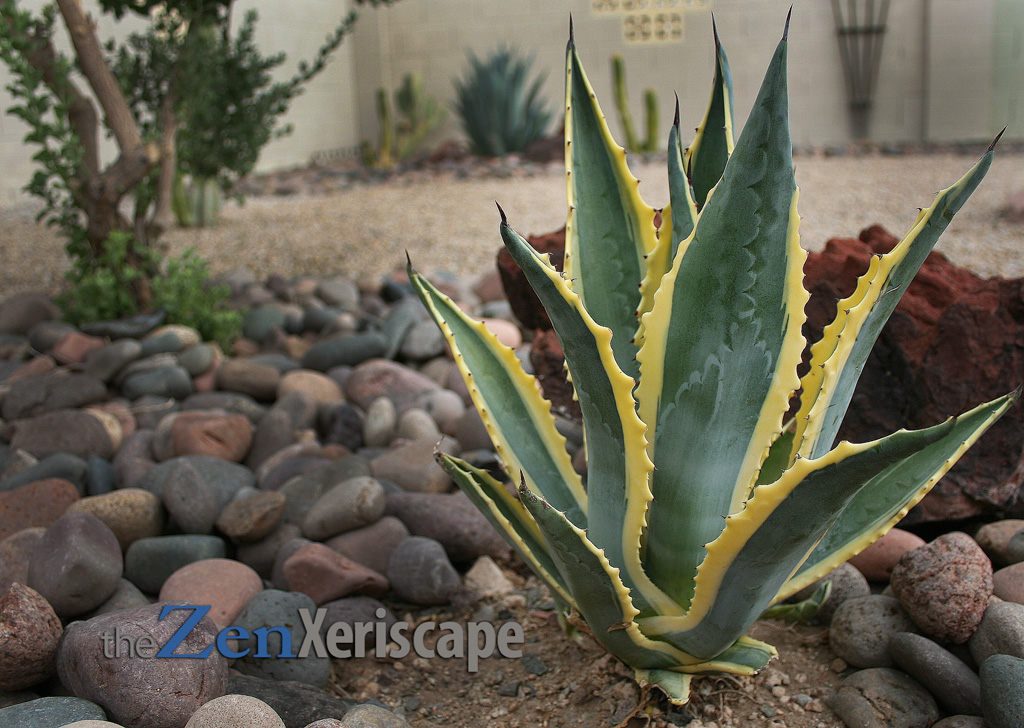
to your drought-tolerant landscape.
Photo by Doug Martin
Get Prime! (As an Amazon Associate, I earn a commission from qualifying purchases.)
Takeaways
Variegated century plant pros and cons
The variegation and leaf shape of this agave make it a standout in any xeriscape! In fact, despite its initial small size, a group of them could even be made into a focal point.
The variegated century plant requires little maintenance, and very little supplemental irrigation (if any at all). It’s a hardy plant, and can withstand the extreme temperature swings of a typical arid landscape (hardiness zones 8-to-11).
In fact, this is one of my favorite agaves, and it might be yours, too!
Content and photos by Doug Martin and The Zen Xeriscape


